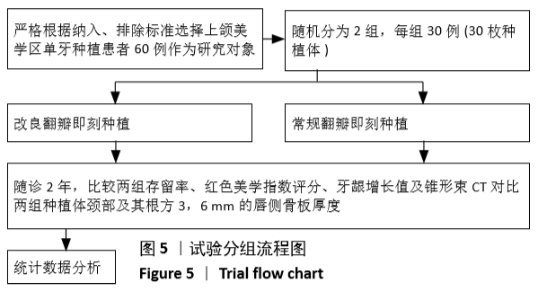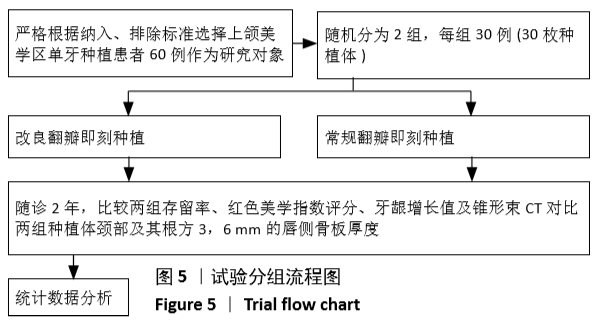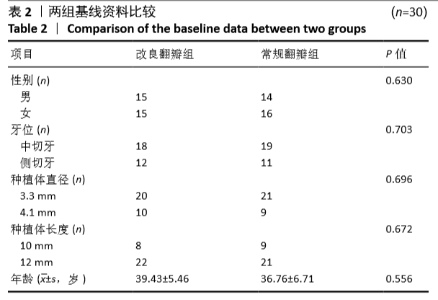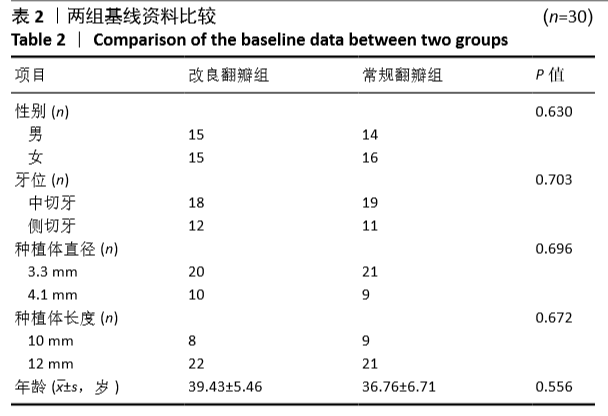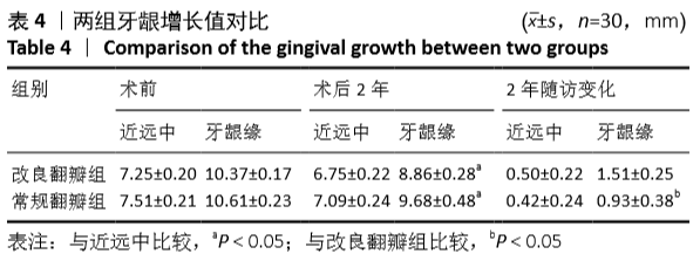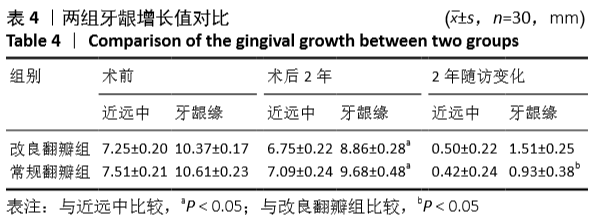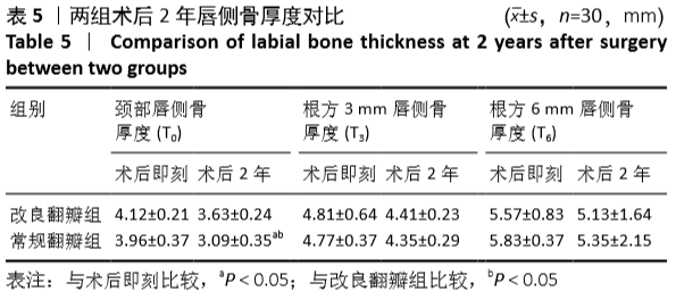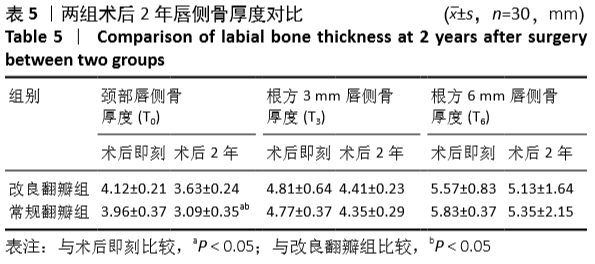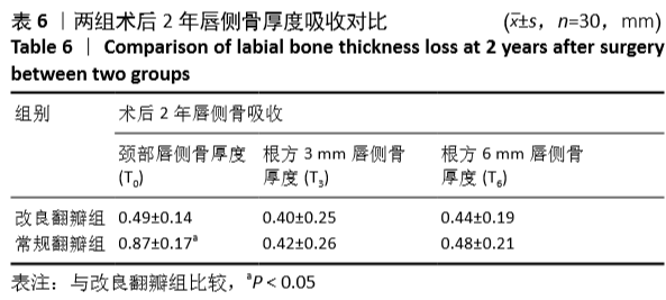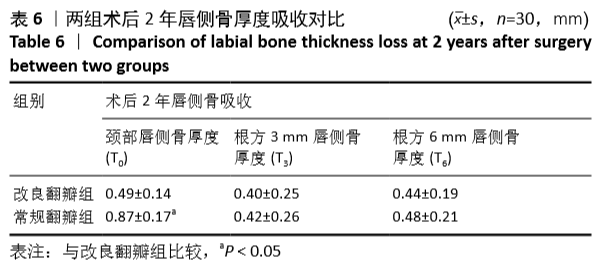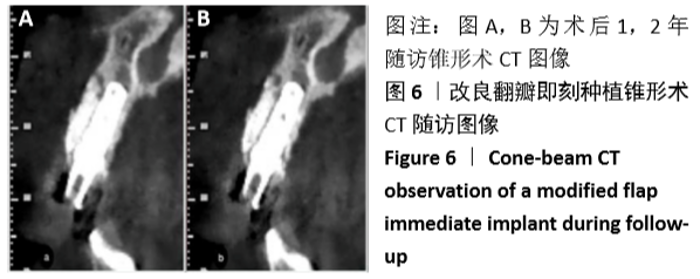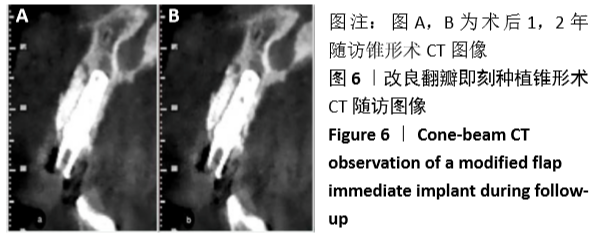Chinese Journal of Tissue Engineering Research ›› 2021, Vol. 25 ›› Issue (5): 707-712.doi: 10.3969/j.issn.2095-4344.3003
Previous Articles Next Articles
A modified flap immediate implant is beneficial to soft tissue reconstruction in maxillary aesthetic area
Zhang Bin, Sun Lihua, Zhang Junhua, Liu Yusan, Cui Caiyun
- Binzhou Medical University Hospital, Binzhou 256600, Shandong Province, China
-
Received:2019-12-23Revised:2019-12-27Accepted:2020-04-11Online:2021-02-18Published:2020-11-28 -
Contact:Zhang Bin, Binzhou Medical University Hospital, Binzhou 256600, Shandong Province, China -
About author:Zhang Bin, Master, Attending physician, Binzhou Medical University Hospital, Binzhou 256600, Shandong Province, China -
Supported by:the Natural Science Foundation of Shandong Province, No. ZR2019PH083
CLC Number:
Cite this article
Zhang Bin, Sun Lihua, Zhang Junhua, Liu Yusan, Cui Caiyun. A modified flap immediate implant is beneficial to soft tissue reconstruction in maxillary aesthetic area[J]. Chinese Journal of Tissue Engineering Research, 2021, 25(5): 707-712.
share this article
Add to citation manager EndNote|Reference Manager|ProCite|BibTeX|RefWorks
| [1] URBAN IA, LOZADA JL, WESSING B, et al. Vertical bone grafting and periosteal vertical mattress suture for the fixation of resorbable membranes and stabilization of particulate grafts in horizontal guided bone regeneration to achieve more predictable results: a technical report. Int J Periodontics Restorative Dent. 2016;36(2):153-159. [2] STOUPEL J, LEE CT, GLICK J, et al. Immediate implant placement and provisionalization in the aesthetic zone using a flapless or a flap-involving approach: a randomized controlled trial. J Clin Periodontol. 2016;43(12):1171-1179. [3] LI J, CHEN Z, CHAN HL, et al. Does flap opening or not influence the accuracy of semi-guided implant placement in partially edentulous sites? Clin Implant Dent Relat Res. 2019;21(6):1253-1261. [4] BERBERI A, NADER N, NOUJEIM Z, et al. Horizontal and vertical reconstruction of the severely resorbed maxillary jaw using subantral augmentation and a novel tenting technique with bone from the lateral buccal wall. J Maxillofac Oral Surg. 2015;14(2):263-270. [5] DAGA D, MEBROTRA D, MOHAMMAD S, et al. Tentpole technique for bone regeneration in vertically deficient alveolar ridges: a prospective study. J Oral Biol Craniofac Res. 2018;8(1):20-24. [6] POURDANESH F, ESMAEELINEJAD M, AGHDASHI F. Clinical outcomes of dental implants after use of tenting for bony augmentation: a systematic review. Br J Oral Maxillofac Surg. 2017;55(10):999-1007. [7] TORRES Y, RAOUL G, LAUWERS L, et al. The use of onlay bone grafting for implant restoration in the extremely atrophic anterior maxilla. A case series. Swiss Dent J. 2019;129(4):274-285. [8] ELGALI I, OMAR O, DAHLIN C, et al. Guided bone regeneration: materials and biological mechanisms revisited. Eur J Oral Sci. 2017; 125(5):315-337. [9] FÜRHAUSER R, MAILATH-POKORNY G, HAAS R, et al. Immediate restoration of immediate implants in the esthetic zone of the maxilla via the copy-abutment technique: 5-year follow-up of pink esthetic scores. Clin Implant Dent Relat Res. 2017;19(1):28-37. [10] DE ROUCK T, COLLYS K, COSYN J. Immediate single-tooth implants in the anterior maxilla: a 1-year case cohort study on hard and soft tissue response. J Clin Periodontol. 2008;35(7):649-657. [11] LIN CY, PAN WL, WANG HL. Facial fenestration and dehiscence defects associated with immediate implant placement without flap elevation in anterior maxillary ridge: a preliminary cone beam computed tomography study. Int J Oral Maxillofac Implants. 2018;33(5): 1112-1118. [12] 李昕,赵佳明,曲哲.即刻种植联合GBR在多颗前牙外伤种植修复中的应用[J].中国口腔医学继续教育杂志,2017,20(1):49-54. [13] BENIC GI, EISNER BM, JUNG RE, et al. Hard tissue changes after guided bone regeneration of peri-implant defects comparing block versus particulate bone substitutes: 6-month results of a randomized controlled clinical trial. Clin Oral Implants Res. 2019;30(10):1016-1026. [14] LEE HC, HAN HH, KIM EK. Use of a vertical muscle-sparing latissimus dorsi flap in implant-based breast reconstruction without position change. Ann Plast Surg. 2018;81(2):152-155. [15] PHILLIPS DJ, SWENSON DT, JOHNSON TM. Buccal bone thickness adjacent to virtual dental implants following guided bone regeneration. J Periodontol. 2019;90(6):595-607. [16] NAENNI N, SCHNEIDER D, JUNG RE, et al. Randomized clinical study assessing two membranes for guided bone regeneration of peri-implant bone defects: clinical and histological outcomes at 6 months. Clin Oral Implants Res. 2017;28(10):1309-1317. [17] HUYNH-BA G, PJETURSSON BE, SANZ M, et al. Analysis of the socket bone wall dimensions in the upper maxilla in relation to immediate implant placement. Clin Oral Implants Res. 2010;21(1):37-42. [18] MENDOZA-AZPYR G, DE LA FUENTE A, CHAVEZ E, et al. Horizontal ridge augmentation with guided bone regeneration using particulate xenogenic bone substitutes with or without autogenous block grafts: a randomized controlled trial. Clin Implant Dent Relat Res. 2019;21(4): 521-530. [19] JEPSEN S, SCHWARZ F, CORDARO L, et al. Regeneration of alveolar ridge defects. consensus report of group 4 of the 15th european workshop on periodontology on bone regeneration. J Clin Periodontol. 2019;46 Suppl 21:277-286. [20] SIMON BI, CHIANG TF, DREW HJ. Alternative to the gold standard for alveolar ridge augmentation: tenting screw technology. Quintessence Int. 2010;41(5):379-386. [21] CHASIOTI E, CHIANG TF, DREW HJ. Maintaining space in localized ridge augmentation using guided bone regeneration with tenting screw technology. Quintessence Int. 2013;44(10):763-771. [22] ALTIPARMAK N, AKDENIZ SS, BAYRAM B, et al. Alveolar ridge splitting versus autogenous onlay bone grafting: complications and implant survival rates. Implant Dent. 2017;26(2):284-287. [23] JOHAR AO. Ridge augmentation with autogenous bone graft and expanded polytetrafluoroethylene membrane using tenting screw: a randomized controlled clinical trial. J Contemp Dent Pract. 2019; 20(4):409-416. [24] VERARDI S, ORSINI M, LOMBARDI T, et al. Comparison between two different techniques for peri-implant soft tissue augmentation: Porcine dermal matrix graft versus tenting screw. J Periodontol. 2019. doi: 10.1002/JPER.19-0447. [25] CHIAPASCO M, CASENTINI P. Horizontal bone-augmentation procedures in implant dentistry: prosthetically guided regeneration. Periodontol 2000. 2018;77(1):213-240. [26] YAZAR S, ALTINKAYA A, KARADAG EC, et al. A Simple Flap Design for the Salvage of Immediate Implant-Based Breast Reconstruction. Ann Plast Surg. 2018;80(2):109-112. [27] TANG T, HUANG Z, LIAO L, et al. Factors that Influence Direction Deviation in Freehand Implant Placement. J Prosthodont. 2019;28(5): 511-518. [28] HUTCHENS LH, BEAUCHAMP SD, MCLEOD SH, et al. Considerations for incision and flap design with implant therapy in the esthetic zone. Implant Dent. 2018;27(3):381-387. [29] BECKER W, GOLDSTEIN M, BECKER BE, et al. Minimally invasive flapless implant surgery: a prospective multicenter study. Clin Implant Dent Relat Res. 2005;7 Suppl 1:S21-S27. [30] LANG STÜMPFLE R, PICCININI PS, PEREIRA-LIMA LF, et al. Muscle-Splitting Augmentation-Mastopexy: Implant Protection With an Inferior Dermoglandular Flap. Ann Plast Surg. 2019;82(2):137-144. [31] TURIN SY, LI DD, VACA EE, et al. Nitroglycerin ointment for reducing the rate of mastectomy flap necrosis in immediate implant-based breast reconstruction. Plast Reconstr Surg. 2018;142(3):264e-270e. [32] DAYAKAR MM, WAHEED A, BHAT HS, et al. The socket-shield technique and immediate implant placement. J Indian Soc Periodontol. 2018; 22(5):451-455. |
| [1] | Hu Kai, Qiao Xiaohong, Zhang Yonghong, Wang Dong, Qin Sihe. Treatment of displaced intra-articular calcaneal fractures with cannulated screws and plates: a meta-analysis of 15 randomized controlled trials [J]. Chinese Journal of Tissue Engineering Research, 2021, 25(9): 1465-1470. |
| [2] | Huang Dengcheng, Wang Zhike, Cao Xuewei. Comparison of the short-term efficacy of extracorporeal shock wave therapy for middle-aged and elderly knee osteoarthritis: a meta-analysis [J]. Chinese Journal of Tissue Engineering Research, 2021, 25(9): 1471-1476. |
| [3] | Xu Feng, Kang Hui, Wei Tanjun, Xi Jintao. Biomechanical analysis of different fixation methods of pedicle screws for thoracolumbar fracture [J]. Chinese Journal of Tissue Engineering Research, 2021, 25(9): 1313-1317. |
| [4] | Jiang Yong, Luo Yi, Ding Yongli, Zhou Yong, Min Li, Tang Fan, Zhang Wenli, Duan Hong, Tu Chongqi. Von Mises stress on the influence of pelvic stability by precise sacral resection and clinical validation [J]. Chinese Journal of Tissue Engineering Research, 2021, 25(9): 1318-1323. |
| [5] | Zhang Tongtong, Wang Zhonghua, Wen Jie, Song Yuxin, Liu Lin. Application of three-dimensional printing model in surgical resection and reconstruction of cervical tumor [J]. Chinese Journal of Tissue Engineering Research, 2021, 25(9): 1335-1339. |
| [6] | Zhang Yu, Tian Shaoqi, Zeng Guobo, Hu Chuan. Risk factors for myocardial infarction following primary total joint arthroplasty [J]. Chinese Journal of Tissue Engineering Research, 2021, 25(9): 1340-1345. |
| [7] | Wei Wei, Li Jian, Huang Linhai, Lan Mindong, Lu Xianwei, Huang Shaodong. Factors affecting fall fear in the first movement of elderly patients after total knee or hip arthroplasty [J]. Chinese Journal of Tissue Engineering Research, 2021, 25(9): 1351-1355. |
| [8] | Wang Jinjun, Deng Zengfa, Liu Kang, He Zhiyong, Yu Xinping, Liang Jianji, Li Chen, Guo Zhouyang. Hemostatic effect and safety of intravenous drip of tranexamic acid combined with topical application of cocktail containing tranexamic acid in total knee arthroplasty [J]. Chinese Journal of Tissue Engineering Research, 2021, 25(9): 1356-1361. |
| [9] | Xiao Guoqing, Liu Xuanze, Yan Yuhao, Zhong Xihong. Influencing factors of knee flexion limitation after total knee arthroplasty with posterior stabilized prostheses [J]. Chinese Journal of Tissue Engineering Research, 2021, 25(9): 1362-1367. |
| [10] | Huang Zexiao, Yang Mei, Lin Shiwei, He Heyu. Correlation between the level of serum n-3 polyunsaturated fatty acids and quadriceps weakness in the early stage after total knee arthroplasty [J]. Chinese Journal of Tissue Engineering Research, 2021, 25(9): 1375-1380. |
| [11] | Zhang Chong, Liu Zhiang, Yao Shuaihui, Gao Junsheng, Jiang Yan, Zhang Lu. Safety and effectiveness of topical application of tranexamic acid to reduce drainage of elderly femoral neck fractures after total hip arthroplasty [J]. Chinese Journal of Tissue Engineering Research, 2021, 25(9): 1381-1386. |
| [12] | Wang Haiying, Lü Bing, Li Hui, Wang Shunyi. Posterior lumbar interbody fusion for degenerative lumbar spondylolisthesis: prediction of functional prognosis of patients based on spinopelvic parameters [J]. Chinese Journal of Tissue Engineering Research, 2021, 25(9): 1393-1397. |
| [13] | Lü Zhen, Bai Jinzhu. A prospective study on the application of staged lumbar motion chain rehabilitation based on McKenzie’s technique after lumbar percutaneous transforaminal endoscopic discectomy [J]. Chinese Journal of Tissue Engineering Research, 2021, 25(9): 1398-1403. |
| [14] | Chen Xinmin, Li Wenbiao, Xiong Kaikai, Xiong Xiaoyan, Zheng Liqin, Li Musheng, Zheng Yongze, Lin Ziling. Type A3.3 femoral intertrochanteric fracture with augmented proximal femoral nail anti-rotation in the elderly: finite element analysis of the optimal amount of bone cement [J]. Chinese Journal of Tissue Engineering Research, 2021, 25(9): 1404-1409. |
| [15] | Du Xiupeng, Yang Zhaohui. Effect of degree of initial deformity of impacted femoral neck fractures under 65 years of age on femoral neck shortening [J]. Chinese Journal of Tissue Engineering Research, 2021, 25(9): 1410-1416. |
| Viewed | ||||||
|
Full text |
|
|||||
|
Abstract |
|
|||||
